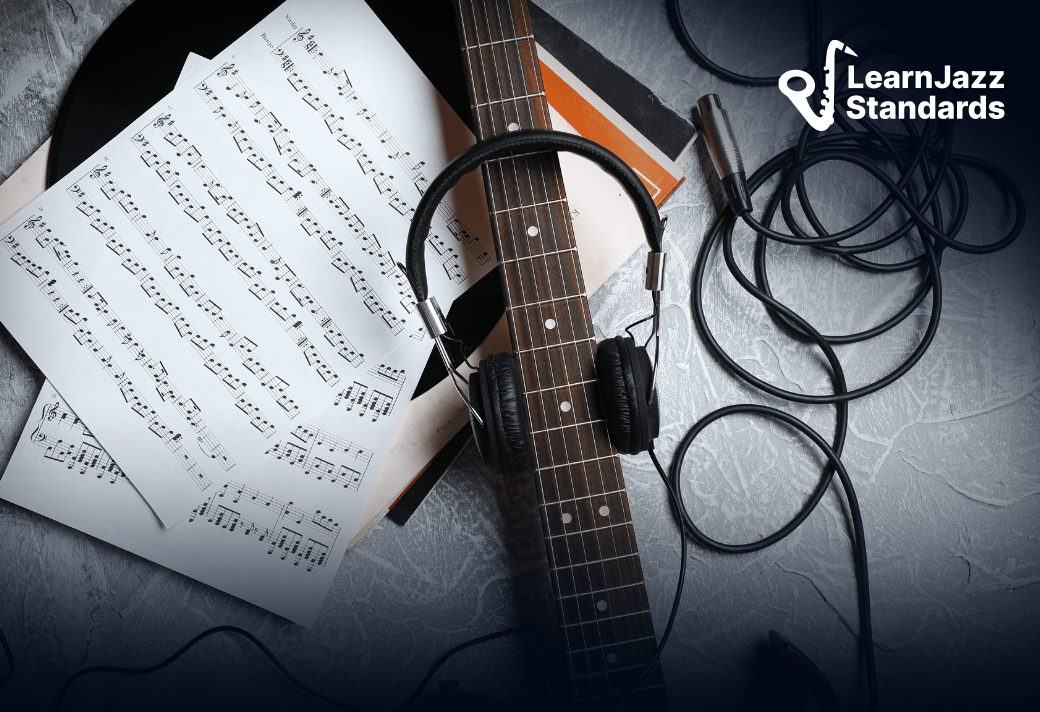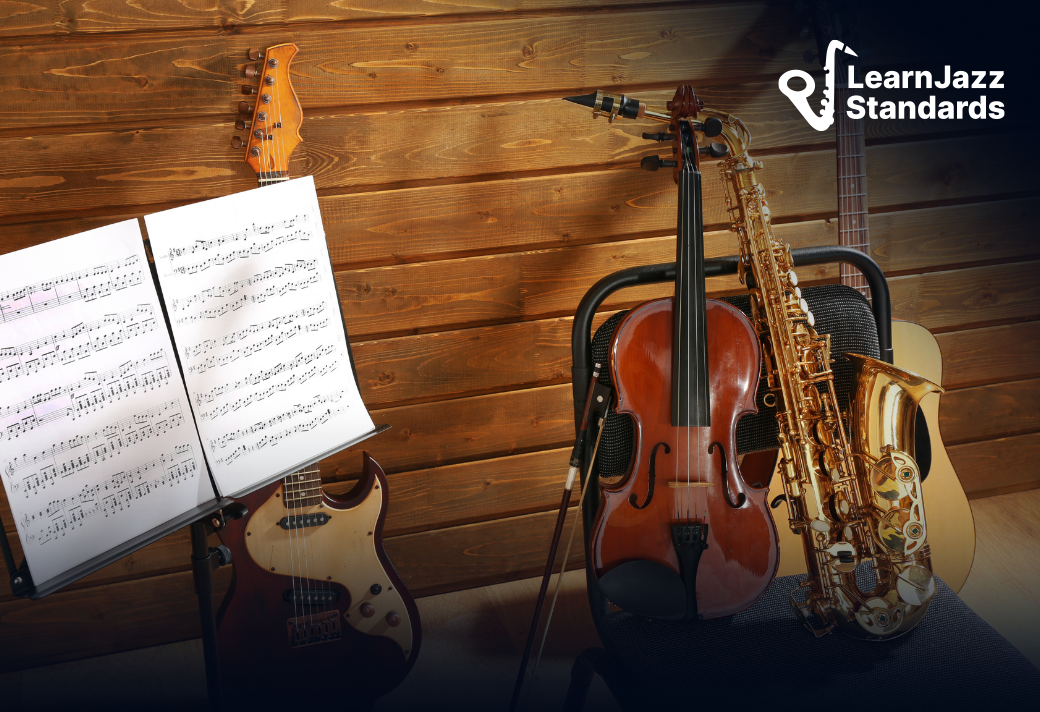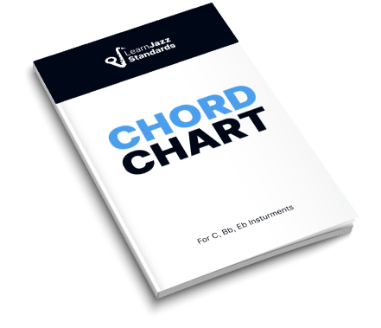One of the most popular jazz standards of all time is “Autumn Leaves” by Joseph Kosma, and if you want to learn Autumn Leaves chords, then this post is for you.
Autumn Leaves is an excellent jazz standard to start with because it covers some basic chord progressions and harmonic concepts found throughout jazz. If you can understand how the harmony of Autumn Leaves works, you’ll be able to play and understand many more jazz standards.
We’ll go over everything you need to know to play this tune, memorize the chords, and solo over the changes by unpacking its harmonic movement and discussing various ways to tackle playing over the chord shapes. That way, whether your goal is to play a chord melody arrangement on piano or guitar or rip through the changes like Michael Brecker, you’ll be on the right path.
Learning jazz standards is the best way to learn jazz. Period. If you love diving deep into jazz standards like Autumn Leaves, then you need to check out the Learn Jazz Standards Inner Circle. We do a deep dive into a new jazz standard every month, which includes:
- A detailed analysis of the jazz standard
- In-depth video walk-through
- Chord tone, guide tone, and scale maps to help you map out note options for improvising
- A professionally-written practice etude to get you playing jazz language over the changes
Plus, you’ll gain access to our entire library of premium practice program courses (over 100 courses), which will help you apply what you’ve learned in the practice room and on the gig.
Come see what the Inner Circle is all about.
Table of Contents
Introducing Autumn Leaves
Let’s begin by learning more about this composition.
Autumn Leaves was composed by the Hungarian-French Composer Joseph Kosma with lyrics by poet Jacques Prévert. Its original title is “Les Feuilles Mortes” which means “The Dead Leaves.” American songwriter Johnny Mercer wrote English lyrics.
The song has an AABA form, meaning the first theme (or section) is repeated, followed by the second theme, and ending on the original theme. It has two main keys: concert G minor and E minor.
Keep in mind that if your instrument is not a Concert C instrument (like guitar or piano), you should know how to transpose tunes to your key. For example:
- If you are a Bb tenor sax player, the key Autumn Leaves is in is A minor (a whole step up from the concert key).
- If you are an Eb alto sax player, E minor (a minor 3rd down from the concert key).
- If you are a C instrument like piano or guitar, you will be playing in G minor as is.
Suggested Listening: Listen to Vocal and Instrumental Arrangements
When learning a song, the most important thing you can do is listen. Listen to as many versions and arrangements of Autumn Leaves as you can. Jazz is all about how a player interprets and reproduces a tune in their own voice, so listening to different arrangements both—vocal and instrumental—is important.
Below are some that I suggest, and you can find them in the YouTube playlist embedded below:
Frank Sinatra from “Where Are You?” 1957
Cannonball Adderley from “Somethin’ Else” 1958
Bill Evans Trio from “Portraits in Jazz” 1959
Gene Ammons and Sonny Stitt from “Boss Tenors” 1961
(Note: on the Boss Tenors recording there is some added harmonic movement outside of the original chord changes)
Now, due to copyright issues, I can’t post the melody of Autumn Leaves. However, I always suggest learning the melody by ear. If you read the melody from a piece of sheet music, you’ll learn the basic structure of the melody, but you miss many of the nuances in the performances of jazz greats.
It’s always better to learn it by ear by cross-referencing different examples.
- Pro tip #1: check out that Sinatra recording. Frank always sings the melody “straight.”
- Pro tip #2: check out the French version, “Les Feuilles Mortes” to hear the melody sung in a different language (which changes the rhythms and placement of notes in the melody).
- Pro Tip #3: listen to versions in various keys to hear the progression from different tonal centers.
Understanding Chord Progressions
To understand the Autumn Leaves analysis we’re about to go over, it is imperative that you understand how chord progressions work and how chord phrases are used to construct jazz standards. I have covered this extensively on our blog, so I don’t want to spend much time doing this.
I would highly suggest checking out two other lessons if you don’t understand this: How to Harmonize a Major Scale with 7th Chords and How to Harmonize Minor Scales with 7th Chords.
But for a quick summary of both, here are two charts that essentially show you how chords work to create chord progressions.
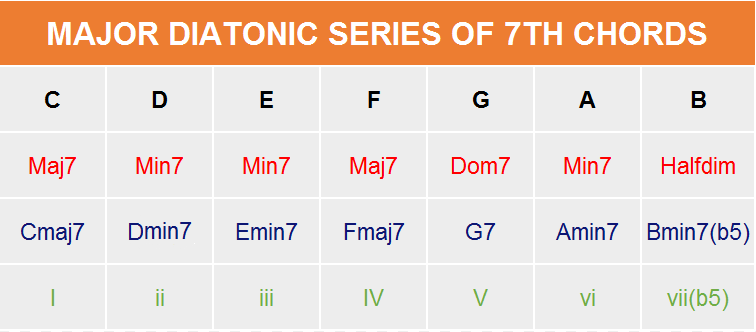
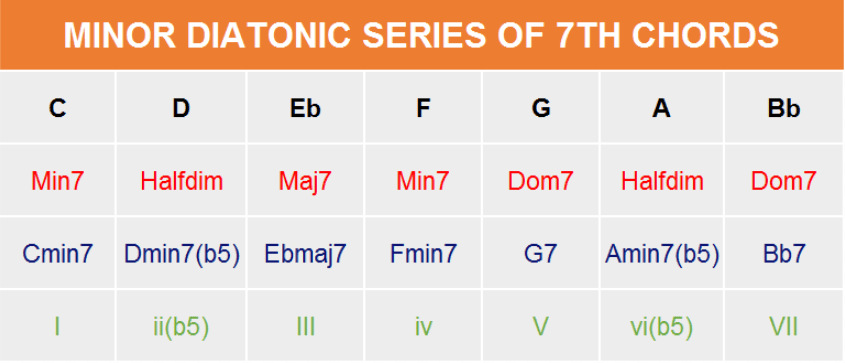
The Minor Diatonic Series of 7th Chords is based on the natural minor scale, harmonic minor scale, and melodic minor scales. The V chord is borrowed from the harmonic and melodic minor harmonization. Instead of it being a minor 7 (like it would be if it were a natural minor scale) it is turned into a dominant 7 chord. Why?
The V chord in traditional harmony is almost always a dominant 7 chord.
The V often resolves to the I chord, and therefore the V in the harmonic and melodic minor is appropriate in this case. In the same way, the vi chord is borrowed from the melodic minor.
Understanding these two charts will be important for today’s lesson. Autumn Leaves is almost entirely made up of major and minor ii-V-I chord progressions. You need to understand the Roman numeral numbering system as it pertains to this chart.
For example, using the Major Diatonic Series of 7th Chords chart you can conclude that a major ii-V-I in concert C is:

By using the Minor Diatonic Series of 7th Chords chart you can conclude that a minor ii-V-i in Concert C is:

Again, if any of this confuses you, go check out those posts I suggested. With all of this in mind, let’s take a look at how the chord changes for Autumn Leaves are written.
Autumn Leaves Chords Analysis
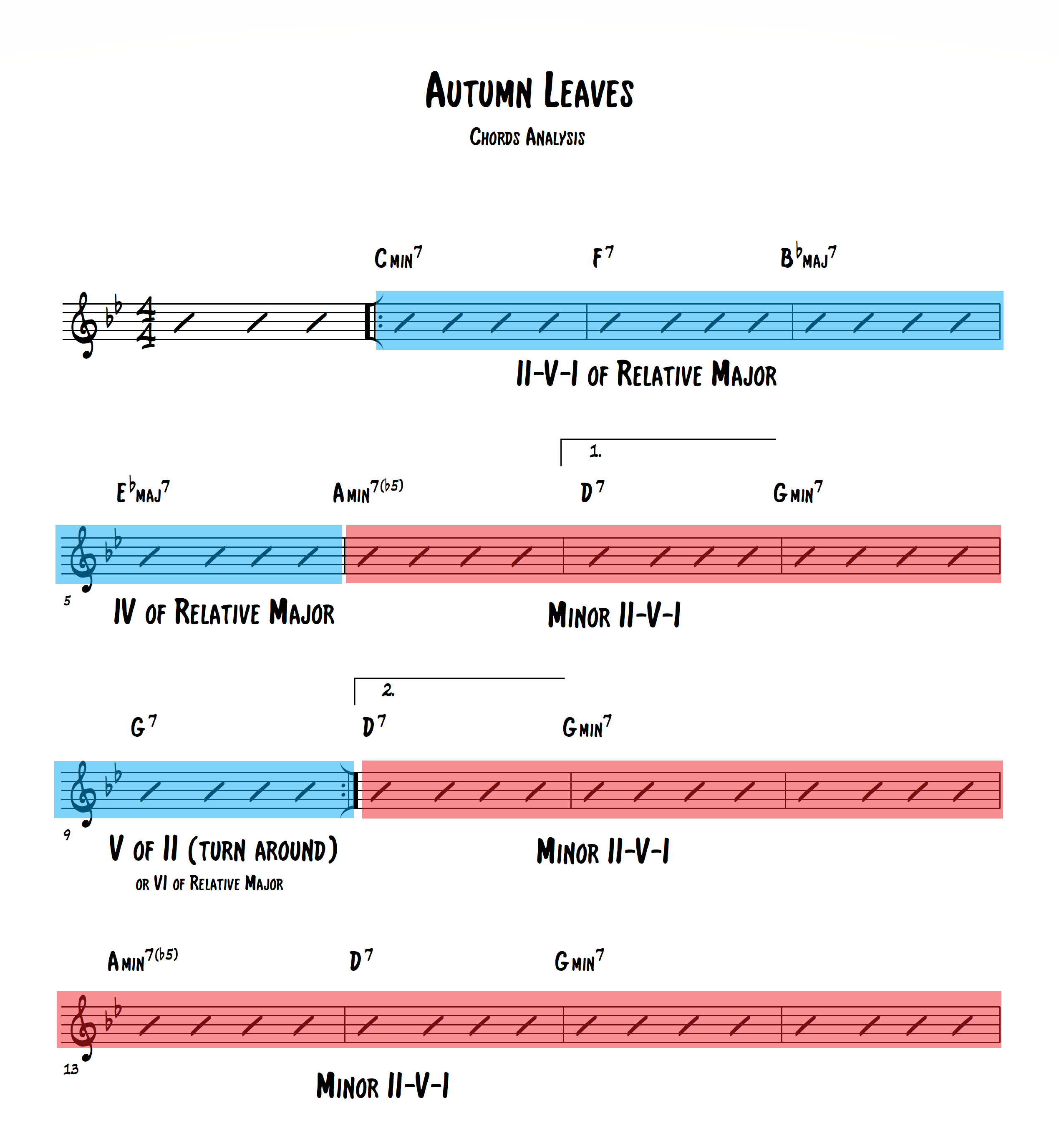
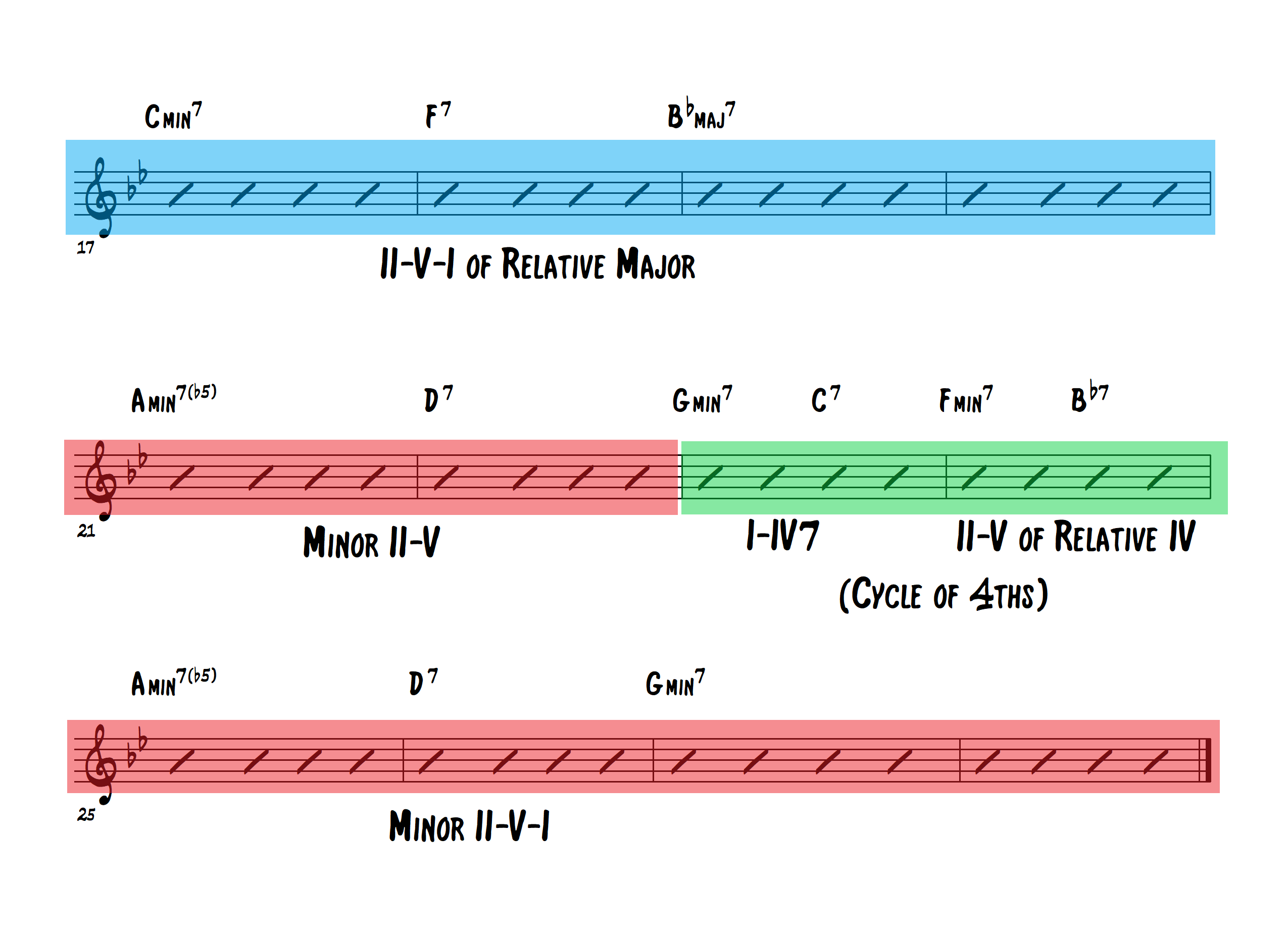
As you can see, I have color-coded different sections of the form to help you understand what is going on with the chords and chord progressions. Let me quickly identify them:
- Blue= the relative major key.
- Red= the minor parent key.
- Green= a section of cycling 4ths.
BEFORE YOU CONTINUE...
If you struggle to learn jazz standards by ear, memorize them, and not get lost in the song form, then our free guide will completely change the way you learn tunes forever.

Understanding Relative Keys
The first thing I want to observe about Autumn Leaves is how it shifts between the relative major and minor keys.
What are relative keys?
Major and minor keys that share the same key signature are called relative keys. Essentially, they share the exact same notes as each other.
Autumn Leaves is in the key of concert G minor. Take a look at the G minor scale.

From the minor key you can either memorize its relative key or use this trick: think a major key a minor 3rd up from the minor key (or vice-versa). In the case of G minor, what would that be? Bb major.

Here is a Bb major scale, and as you can see, they share the exact same key signature. Fairly simple, right?
Autumn Leaves is the perfect study of how relative major and minor keys work together. The entire song is essentially switching between the two, with the exception of one section.
Let’s take a look at it.
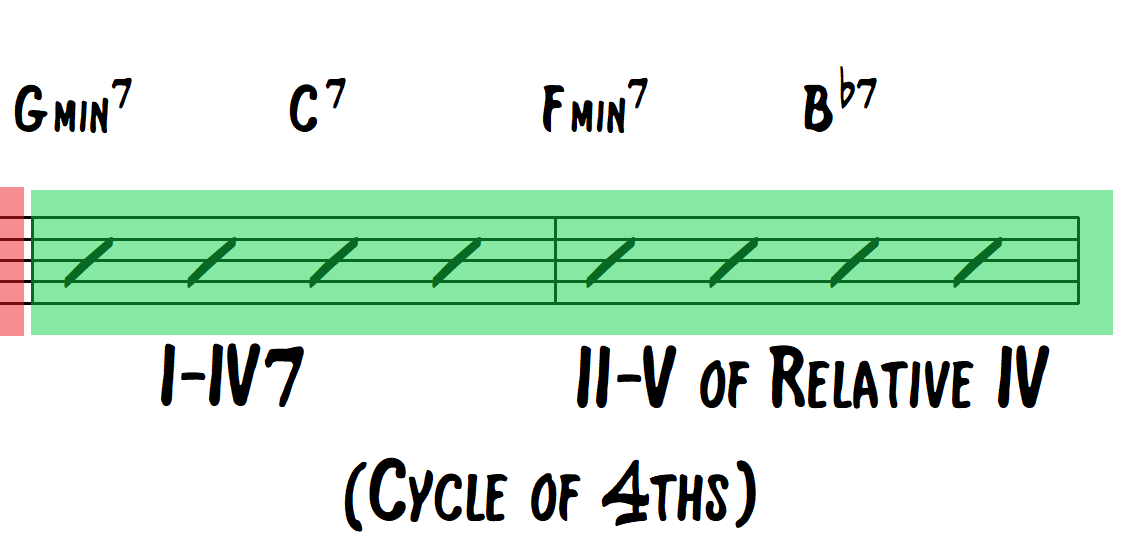
If there is any slightly confusing part of Autumn Leaves this would be it. However, it’s not really all that strange when it comes to jazz harmony.
The first bar starts out on the root minor and then moves to a dominant IV chord.
The movement of the root notes in 4ths is very common in jazz harmony, and we’ll go over that more next. The IV chord in a minor key is normally minor, but jazz musicians are constantly turning minor chords into dominant 7 chords.
From there, you can consider the second bar a ii-V chord progression to the relative major IV chord (Eb), although it doesn’t resolve.
I personally find it beneficial to think of the first bar and the second bar as isolated ii-V chord progressions with no attachment to any particular key. After all, they are just passing chords that ultimately resolve to a minor ii-V-i of G minor.
Major and Minor ii-V-I Chord Progressions
The second big thing to observe about Autumn Leaves is that it is almost entirely ii-V-I chord progressions both in the minor and relative major keys.
When it comes to jazz, there is no more important chord progression to know than the ii-V-I. You will see it come up time and time again, and so you need to be able to recognize it right away and, of course, know how to improvise over it.
The form starts out with a ii-V-I in the relative major key.

This is where knowing your Major and Minor Diatonic Series of 7th Chords comes in handy. You will want to know how to transpose ii-V-I’s into all 12 keys.
If you know them well, you can quickly identify that Bb is the relative major of G minor and that Cmin7-F7-Bbmaj7 is a ii-V-I in the key of Bb major.
Let’s take a look at the transition into the parent minor key.

The Ebmaj7 is the IV chord of the relative major, and it serves as a transition chord into the parent minor ii-V-i.
The beauty of Autumn Leaves is that it is fairly simple when it comes to jazz harmony all while covering two pivotal harmonic concepts that appear in hundreds of other jazz tunes.
Autumn Leaves Guide Tone Chart
One of the most common questions I get is “How do I make the chord changes come out in my solos?”
In other words, if you started improvising without accompaniment would a listener know you were playing Autumn Leaves (assuming they are familiar with the song)?
The key to achieving this is knowing how to outline the chord changes in your improvisation. Guide tones are the perfect starting point. We have talked extensively about guide tones in another lesson, so be sure to check that out if this is new. But here’s a crash course:
In jazz, the guide tones are almost always the 3rds and 7ths of each chord.
Let’s take a look at a ii-V-I in C major for example:

Here’s what this looks like when the guide tones are played melodically and using a concept called voice leading (in this case, connecting the last guide tone in a step-wise motion with the proceeding chord).

With all of this in mind, here is a guide tone chart for Autumn Leaves. It can be incredibly helpful to create guide tones maps to jazz standards.
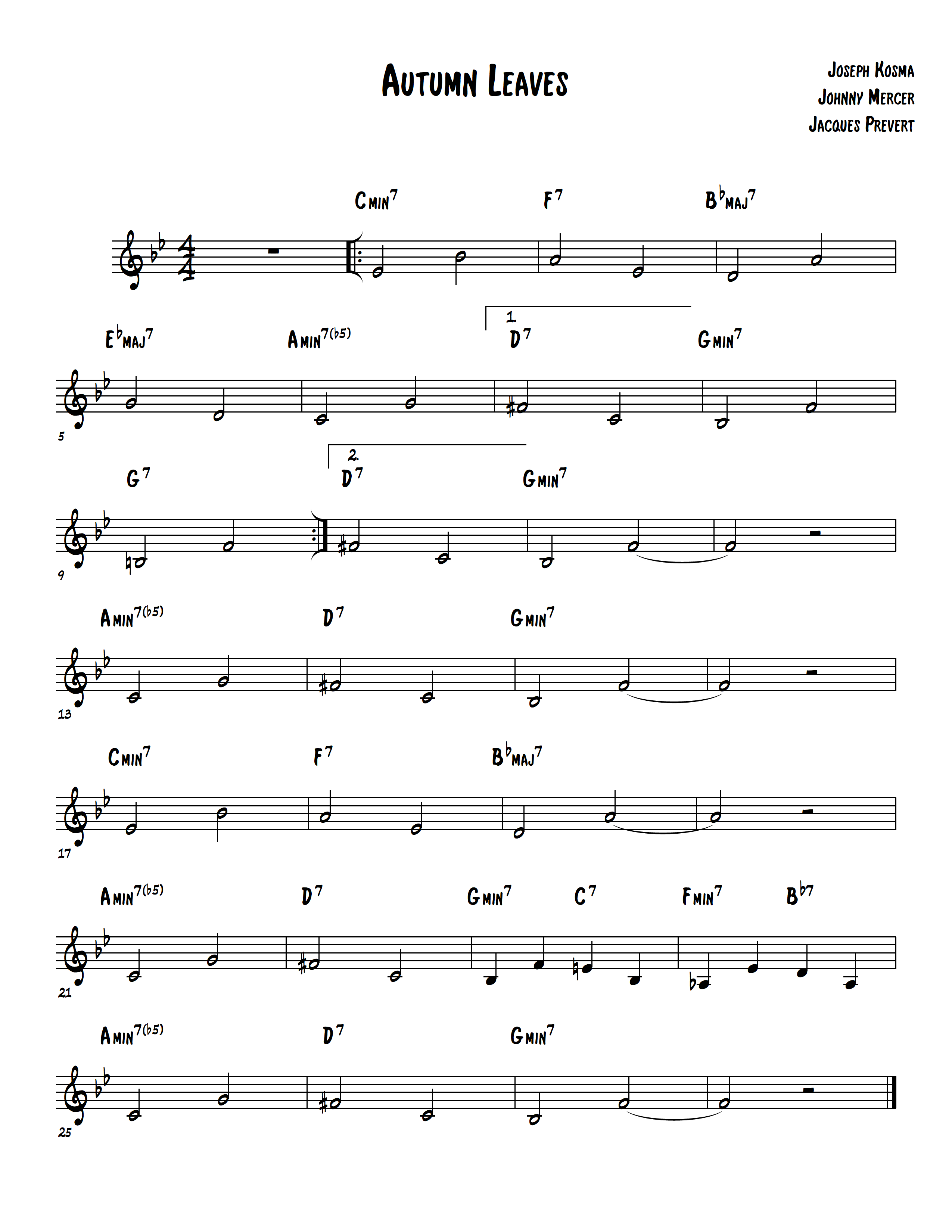
Keep in mind there are many different ways to voice lead guide tones. So feel free to experiment with different guide tone phrases. Play through these guide tones and then try targeting them in your improvisation.
Pro Tip # 4: For the jazz guitarist or pianist—playing shell voicings through a tune is a great way to practice only playing guide tones. Shell voicings are rootless chords that outline the basic harmonic structure of a tune (3rds and 7ths). Thinking about harmony in terms of guide tones can help you break out of stock chord shapes and make chord melody arrangements easier to play.
Autumn Leaves is a great jazz standard to study, and many lessons can be learned from it. It can be helpful to analyze jazz standards like this and break them apart. Spend some time working on this standard and be sure you understand it.
Unlocking this one means you will be unlocking many others in the process.
Join the Inner Circle and Learn a New Jazz Standard Every Month
If you found this post helpful and want more in-depth jazz standard analyses and practice tips, then you need to check out the Learn Jazz Standards Inner Circle.
The Inner Circle contains all the tools you need to learn jazz standards in and out and start improvising over them. If you are tired of “half-learning” jazz tunes and want to make real progress in tune memorization and retention, the Inner Circle is the place for you.




